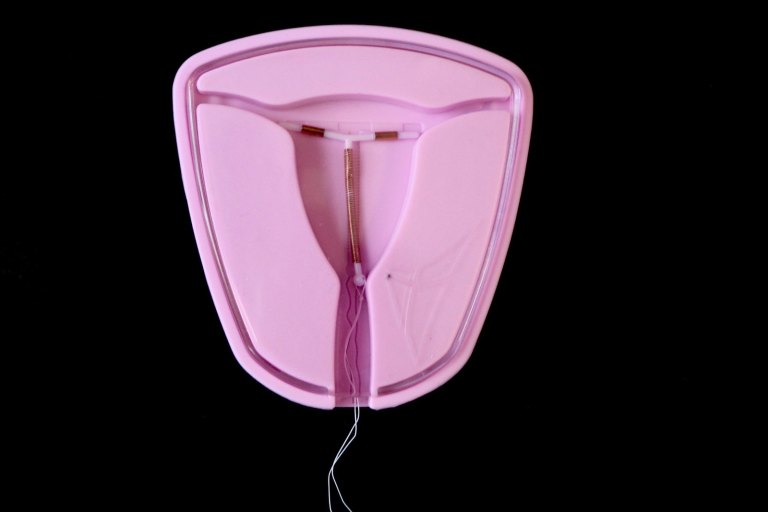There Are Tons Of Things I Can’t Control, But My Reproductive System Won’t Be One Of Them
Opting to get my copper IUD inserted wasn't an overnight decision, nor was it one that was made after a single routine gynecology appointment.
Last Sunday, my cervix wasn’t happy with me. Okay, perhaps that’s a bit of an understatement. My cervix was throwing a temper tantrum because of what I did to it about 48 hours prior. That’s when I officially became a member of Team IUD.
What is an IUD, you ask? An IUD is a small, T-shaped device that’s inserted into the uterus to prevent pregnancy. It lasts for up to 10 years and is considered the most effective form of birth control, with a failure rate of less than 1 pregnancy per 100 women (compared to 9 pregnancies per 100 women on the pill).
Opting to get my copper IUD inserted wasn’t an overnight decision, nor was it one that was made after a single routine gynecology appointment.
For the past two years, I’ve been researching birth control options that fit my needs. Being hormone-free was important to me because there are enough chemicals coursing through my veins that help me successfully keep my anxiety and depression in check.
Additionally, since my mother has had several strokes over the past decade, anything I can do to decrease my risks of blood clots are crucial. But the fundamental piece that sold me on choosing Paraguard, a copper IUD, was the success rate of thwarting pregnancy.
Personally, this was the peace of mind necessary to finally release my inhibitions completely to enjoy sex (with the protection of a condom to prevent STDs, because I’m aware that an IUD doesn’t prevent STDs).
At this point in my life, I’m nowhere near financially or emotionally prepared to care for a child. Some weeks it’s a struggle to pay all my bills on time and not live on Ramen, even with a full-time job that pays well.
There are countless women who are my age and younger that are thriving at motherhood. Kudos to them.
I’m also not afraid to admit that my career and ambitions as a writer are my two main priorities at the moment and there’s still so much I want to achieve in the upcoming years. The thought of my contraception failing and derailing the track I’ve been on is, well, devastating.
Maybe that makes me selfish, or that I’m not prioritizing the right things in life. But that’s the beauty of being a young, American woman in the 21st century with access to a variety of contraception options: it’s my choice.
As far as the IUD insertion experience, I’m not going to lie: It wasn’t a walk in the park.
There were multiple times during the half hour appointment that my wonderful gynecologist offered to stop the procedure because of my pitiful whimpers.
The part that caused the most discomfort was when she used the specula, a tool inserted to “inflate” or open up the vagina. After a minute of wriggling in the chair and letting out a whimper, I told my doctor it felt like she was trying to jam a rectangular block into a circle peg.
Knowing this uncomfortable feeling was exacerbated because of my low tolerance of pain — and that I’d never return to get the procedure done if we stopped — we continued. (Luckily, I had the hindsight to request Xanax to relax me before the appointment, which made a HUGE difference).
Being able to keep an open dialogue with my physician during the entire appointment was important because she continuously explained what was about to happen and made sure it was OK with me.
Thankfully, she was able to bring in another size specula that made the expansion less intense. Once the “doors” were open (so to speak), the insertion of the IUD felt like a very intense menstrual cramp that you’d feel at the very start of your cycle.
Although I wouldn’t describe the pain as “comfortable” at least it was familiar enough to endure the 45 seconds of the insertion. After it was in, relief was immediate.
Boom! I was the proud owner of a copper IUD and commended for my commitment to sticking out the procedure — apparently, I’d handled it better than most women who have had multiple kids!
Once I received instructions on potential symptoms to expect over the next 48 hours, I was free to go about my day.
The lingering effects of the IUD insertion were similar to extremely uncomfortable menstrual cramping of a particularly brutal cycle, but with no bleeding. All of the horror stories — like faint-inducing pain, debilitating cramps, and uncontrollable bleeding — that I stumbled upon through Google search didn’t occur for me.
The copper IUD lasts a decade, which means I’ll be 36 when it loses its baby-stopping abilities. My gynecologist said that the IUD can be removed at any time if I decide to have children before then.
Life is full of situations beyond my control, but my reproductive system won’t be one of them. ![]()





